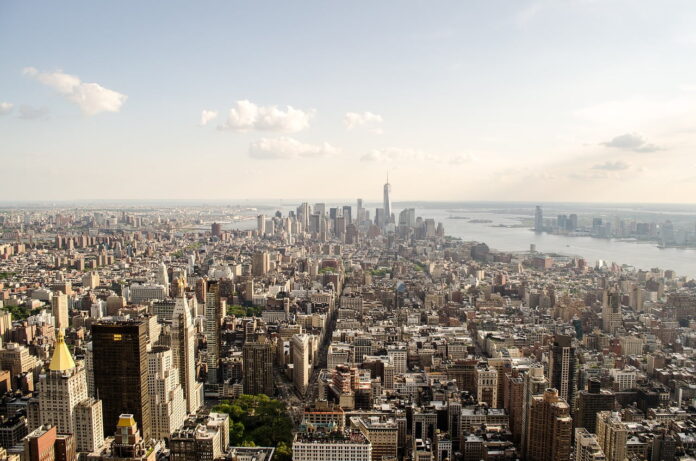The high water crisis, characterized by the relentless rise of sea levels, presents an existential threat to coastal cities worldwide. As the planet warms, glaciers and ice sheets melt, and the thermal expansion of seawater contributes to a gradual but inexorable encroachment of the oceans upon land. This phenomenon is not merely a future prediction; it is a present reality that has begun to reshape the contours of our coastal landscapes. The implications for urban areas are profound, affecting everything from infrastructure to the socio-economic fabric of communities. In this article, we will delve into the multifaceted challenges posed by rising sea levels and explore how cities can adapt to an uncertain aquatic future.
The Rising Tide: Examining the Causes and Projections of Increasing Sea Levels
The causes of rising sea levels are rooted in human-induced climate change. The burning of fossil fuels releases greenhouse gases, which trap heat in the Earth’s atmosphere, leading to global warming. This warming is the primary driver behind the melting of polar ice caps and glaciers, as well as the thermal expansion of the oceans. Current projections suggest that sea levels could rise by up to 1 meter (3 feet) or more by the end of the century, depending on the trajectory of global greenhouse gas emissions. Such an increase could displace millions of people and cause trillions of dollars in damage to urban infrastructure. The urgency of these projections cannot be overstated, as they serve as a clarion call for immediate action to mitigate and adapt to the impacts of the high water crisis.
Sinking Foundations: The Toll of Saltwater Intrusion on Urban Infrastructure
Saltwater intrusion, a direct consequence of rising sea levels, poses a significant threat to urban infrastructure. As seawater encroaches on coastal cities, it can corrode and weaken the foundations of buildings, bridges, and roads. Underground systems, such as subways and utility tunnels, are particularly vulnerable, as saltwater can cause electrical short circuits and accelerate the deterioration of concrete and metal. The infiltration of saltwater into freshwater aquifers threatens the supply of potable water, necessitating costly treatment solutions. The economic toll of repairing and reinforcing infrastructure against saltwater intrusion is immense, and cities must prioritize investments in resilient design to safeguard their future.
Flooded Futures: How Rising Sea Levels Are Reshaping Urban Landscapes and Livelihoods
The impact of rising sea levels extends beyond the physical damage to infrastructure; it also has profound implications for urban landscapes and the livelihoods of those who inhabit them. Coastal erosion and regular flooding are becoming the new normal for many communities, leading to the loss of property and habitable land. Real estate values in vulnerable areas are beginning to reflect this risk, potentially leading to a decline in municipal revenues and an increase in insurance costs. The social fabric of cities is also at stake, as displacement and relocation become more common, particularly among economically disadvantaged populations. The need for comprehensive urban planning that incorporates flood defenses and elevated structures is more pressing than ever to protect communities and maintain the vitality of urban life.
Building Resilience: Innovative Approaches to Urban Planning and Infrastructure Design
In response to the high water crisis, cities are turning to innovative approaches in urban planning and infrastructure design to build resilience against rising sea levels. Green infrastructure, such as parks and wetlands, can act as natural buffers, absorbing storm surges and reducing flood risk. The concept of “living shorelines” combines natural habitat with engineered structures to protect against erosion while promoting biodiversity. Additionally, floating architecture and amphibious buildings are being explored as adaptive solutions in areas prone to flooding. Urban planners are also rethinking zoning laws and building codes to encourage the construction of resilient structures and the retrofitting of existing ones. These forward-thinking strategies represent a paradigm shift in how cities interact with their waterfronts, emphasizing harmony with the natural environment rather than dominance over it.
Navigating the Storm: Strategies for Enhancing City Preparedness and Response to Sea-Level Rise
Enhancing city preparedness and response to sea-level rise requires a multifaceted strategy that encompasses governance, community engagement, and technological innovation. Cities must develop comprehensive emergency management plans that address the unique challenges of coastal flooding, including evacuation routes, shelter locations, and communication systems. Public-private partnerships can leverage resources and expertise to implement large-scale infrastructure projects. Community-based initiatives, such as citizen science programs and educational campaigns, can raise awareness and foster a culture of preparedness. Furthermore, advancements in technology, such as predictive modeling and real-time monitoring systems, can provide critical data to inform decision-making and emergency response. By navigating the storm with a proactive and inclusive approach, cities can chart a course toward a resilient and sustainable future in the face of rising sea levels.
The high water crisis is a complex and pressing issue that demands immediate attention. The implications for coastal cities are far-reaching, affecting infrastructure, landscapes, and livelihoods. Through innovative urban planning, resilient infrastructure design, and comprehensive preparedness strategies, cities can confront the challenges of rising sea levels and emerge stronger and more adaptable. The time to act is now, as the tide waits for no one.
